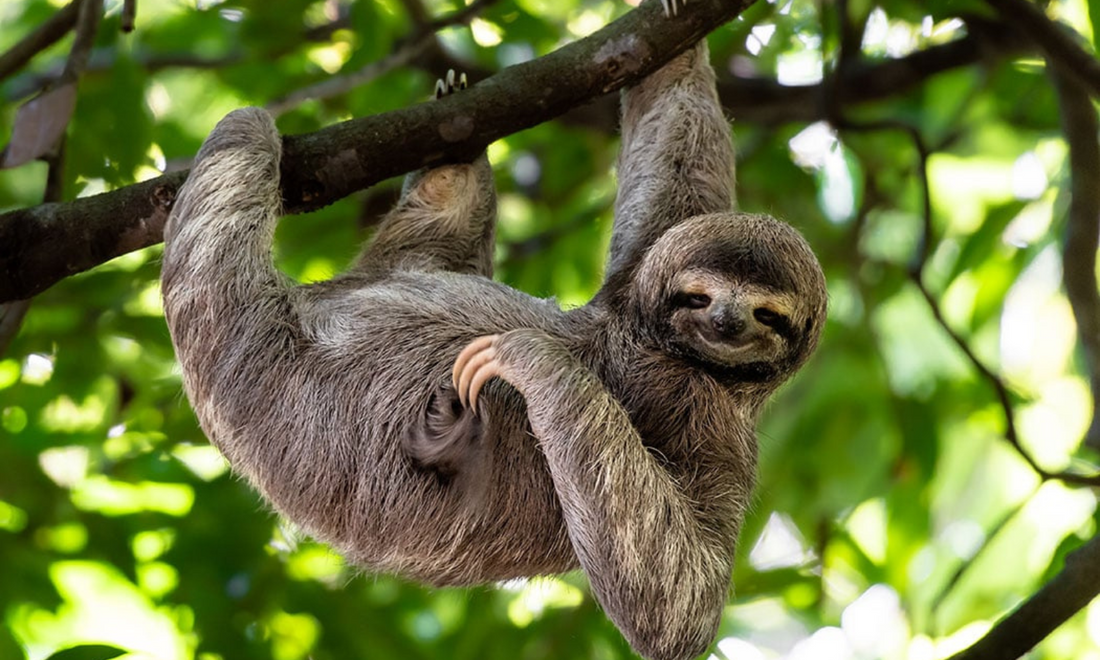The sloth Bradypus tridactylus, also known as the "king of laziness," truly lives up to its title as the laziest creature in the animal kingdom. They are found in Central and South America, inhabiting forests and along riverbanks where the Cecropia lyratiloba tree grows.

Bradypus tridactylus moves extremely slowly, even slower than the famously slow-moving tortoise. Each day, they only cover about 28 meters, showcasing astonishing laziness.
Their diet consists mainly of leaves, especially those of the Cecropia lyratiloba tree. Due to their poor vision and hearing, they rely on their sense of smell and touch to find food. They are so lazy that they won't even bother pulling leaves into their mouth but instead opt to eat the ones right in front of them, at an incredibly slow pace.
Sloths take between 4 to 7 days to digest their food, as their digestive system operates slowly and efficiently. This slow digestion allows them to process the high-fiber and antibiotic-rich foods found in the leaves they prefer to eat. Thanks to this slow digestion, sloths are able to utilize all the energy from the food they consume, maintaining their energy levels without expending too much on digestion, thus improving their digestive efficiency.

Image: Sloth refusing to eat leaves in front of it
In addition to their slow movements and digestion, sloths exhibit remarkable camouflage abilities. They can grow moss in their fur, providing excellent camouflage that makes them extremely difficult for predators to detect. This moss-covered appearance helps sloths blend seamlessly into their forest environment, providing them with effective protection from predators.


Bradypus tridactylus leads an extremely peculiar lifestyle, spending their days and nights hanging upside down from tree branches. They only forage for food at night and rarely descend to the ground. When they need to relieve themselves, they won't even stand up but instead use their claws to drag themselves to a designated spot.
The mating season for sloths occurs in March and April. After a gestation period of about 180 days, the baby sloth is born in an upside-down position on a tree. It clings to its mother's fur and lives on her belly before eventually learning to climb onto tree branches on its own.


